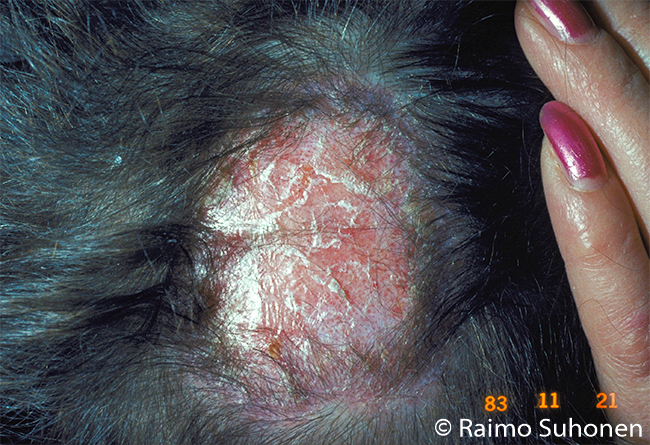Discoid Lupus Erythematosus on the Top of the Head

Discoid lupus erythematosus on the top of the head. Despite all treatment efforts, discoid lupus erythematosus of the scalp has caused local hair loss in a female patient.
Picture and text: Raimo Suhonen